| Listing 1 - 10 of 21 | << page >> |
Sort by
|
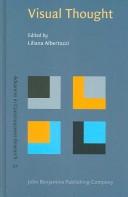
ISBN: 9027252033 9789027252036 9789027293015 9027293015 128215513X 9781282155138 9786612155130 Year: 2006 Publisher: Amsterdam ; Philadelphia, PA : John Benjamins Pub.,
Abstract | Keywords | Export | Availability | Bookmark
 Loading...
Loading...Choose an application
- Reference Manager
- EndNote
- RefWorks (Direct export to RefWorks)
Cognitive psychology --- Consciousness --- Space perception --- Gestalt Theory --- Spatial perception --- Perception --- Spatial behavior --- Figure-ground perception --- Geographical perception --- Apperception --- Mind and body --- Philosophy --- Psychology --- Spirit --- Self --- Space perception. --- Consciousness.
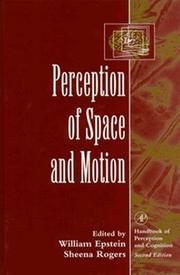
ISBN: 0122405307 9780080538617 0080538614 1281032840 9781281032843 9780122405303 9786611032845 Year: 1995 Publisher: San Diego : Academic Press,
Abstract | Keywords | Export | Availability | Bookmark
 Loading...
Loading...Choose an application
- Reference Manager
- EndNote
- RefWorks (Direct export to RefWorks)
During the past 25 years, the field of space and motion perception has rapidly advanced. Once thought to be distinct perceptual modes, space and motion are now thought to be closely linked. Perception of Space andMotion provides a comprehensive review of perception and vision research literature, including new developments in the use of sound and touch in perceiving space and motion. Other topics include the perception of structure from motion, spatial layout,and information obtained in static and dynamic stimulation.Spatial layoutStructure from motionInformation on stat
Affective and dynamic functions --- Picture perception --- Space perception --- Visual perception --- Perception des images --- Perception spatiale --- Perception visuelle --- Motion perception (Vision) --- Space perception. --- Picture perception. --- Visual perception.
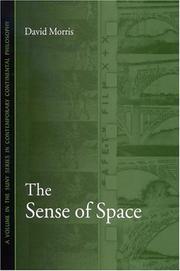
ISBN: 0791484599 1423740238 9781423740230 9780791461839 0791461831 9780791484593 9780791484593 Year: 2004 Publisher: Albany : State University of New York Press,
Abstract | Keywords | Export | Availability | Bookmark
 Loading...
Loading...Choose an application
- Reference Manager
- EndNote
- RefWorks (Direct export to RefWorks)
The Sense of Space brings together space and body to show that space is a plastic environment, charged with meaning, that reflects the distinctive character of human embodiment in the full range of its moving, perceptual, emotional, expressive, developmental, and social capacities. Drawing on the philosophies of Merleau-Ponty and Bergson, as well as contemporary psychology to develop a renewed account of the moving, perceiving body, the book suggests that our sense of space ultimately reflects our ethical relations to other people and to the places we inhabit.
Space perception. --- Movement (Philosophy) --- Human body (Philosophy) --- Spatial perception --- Perception --- Spatial behavior --- Figure-ground perception --- Geographical perception --- Philosophy --- Body, Human (Philosophy) --- Merleau-Ponty, Maurice, --- Space perception --- Philosophy and psychology of culture
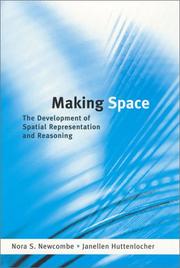
ISBN: 0262280590 0585481210 0262640503 0262140691 9780262280594 9780262140690 9780262640503 Year: 2000 Publisher: Cambridge (MA) ; London : M.I.T. Press,
Abstract | Keywords | Export | Availability | Bookmark
 Loading...
Loading...Choose an application
- Reference Manager
- EndNote
- RefWorks (Direct export to RefWorks)
Spatial competence is a central aspect of human adaptation. To understand human cognitive functioning, we must understand how people code the locations of things, how they navigate in the world, and how they represent and mentally manipulate spatial information. Until recently three approaches have dominated thinking about spatial development. Followers of Piaget claim that infants are born without knowledge of space or a conception of permanent objects that occupy space. They develop such knowledge through experience and manipulation of their environment. Nativists suggest that the essential aspects of spatial understanding are innate and that biological maturation of specific brain areas can account for whatever aspects of spatial development are not accounted for at birth. The Vygotskan approach emphasizes the cultural transmission of spatial skills.Nora Newcombe and Janellen Huttenlocher argue for an interactionist approach to spatial development that incorporates and integrates essential insights of the classic three approaches. They show how biological preparedness interacts with the spatial environment that infants encounter after birth to create spatial development and mature spatial competence. Topics covered include spatial coding during infancy and childhood; the early origins of coding distance in continuous space, of coding location with respect to distal external landmarks, and of hierarchical combination of information; the mental processes that operate on stored spatial information; spatial information as encoded in models and maps; and spatial information as encoded in language. In conclusion, the authors discuss their account of spatial development in relation to various approaches to cognitive development in other domains, including quantitative development, theory of mind, and language acquisition.
Cognitive psychology --- Psycholinguistics --- Affective and dynamic functions --- Space perception in children --- Space Perception --- Child --- Space perception in children. --- Experimentele psychologie --- denken, begripsvorming en problem solving. --- #PBIB:2001.2 --- COGNITIVE SCIENCES/General --- COGNITIVE SCIENCES/Psychology/Cognitive Psychology --- Perception in children --- Perception spatiale chez l'enfant --- Développement de l'enfant --- Raisonnement --- Représentation mentale --- Perception --- Processus cognitif --- Representation spatiale
Periodical
Abstract | Keywords | Export | Availability | Bookmark
 Loading...
Loading...Choose an application
- Reference Manager
- EndNote
- RefWorks (Direct export to RefWorks)
Emotions --- Spatial behavior --- Space perception --- Emotions. --- Space perception. --- Spatial behavior. --- Behavior, Spatial --- Proxemic behavior --- Space behavior --- Spatially-oriented behavior --- Spatial perception --- Feelings --- Human emotions --- Passions --- Psychology --- Space and time --- Perception --- Figure-ground perception --- Geographical perception --- Affect (Psychology) --- Affective neuroscience --- Apathy --- Pathognomy --- Health Sciences --- Psychiatry & Psychology
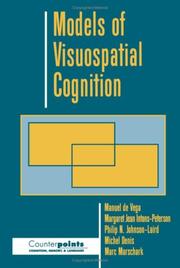
ISBN: 1280528397 0195356500 1429406461 9781429406468 9786610528394 661052839X 0195100859 9780195100853 0195100840 9780195100846 0197736238 Year: 2023 Publisher: New York : Oxford University Press,
Abstract | Keywords | Export | Availability | Bookmark
 Loading...
Loading...Choose an application
- Reference Manager
- EndNote
- RefWorks (Direct export to RefWorks)
Theories and research relating to visuospatial cognition have been of interest to a broad range of psychologists. This second volume in the 'Counterpoints' series considers visuospatial cognition from the perspectives of three of the most recognized investigators in the field, Michel Denis, Margaret Intons-Peterson and Philip Johnson-Laird.
Mental representation. --- Space perception. --- Imagery (Psychology) --- Imagery, Mental --- Images, Mental --- Mental imagery --- Mental images --- Imagination --- Visualization --- Spatial perception --- Perception --- Spatial behavior --- Figure-ground perception --- Geographical perception --- Representation, Mental --- Abstraction --- Mental representation --- Space perception --- Cognitive psychology --- Imagery (Psychology). --- Experimentele psychologie --- geheugen en aandacht.
Book
ISBN: 067474487X 0674735773 9780674735774 9780674863217 0674863216 9780674744875 Year: 2014 Publisher: Cambridge, Massachusetts
Abstract | Keywords | Export | Availability | Bookmark
 Loading...
Loading...Choose an application
- Reference Manager
- EndNote
- RefWorks (Direct export to RefWorks)
Knowing where things are seems effortless. Yet our brains devote tremendous computational power to figuring out the simplest details about spatial relationships. Going to the grocery store or finding our cell phone requires sleuthing and coordination across different sensory and motor domains. Making Space traces this mental detective work to explain how the brain creates our sense of location. But it goes further, to make the case that spatial processing permeates all our cognitive abilities, and that the brain’s systems for thinking about space may be the systems of thought itself. Our senses measure energy in the form of light, sound, and pressure on the skin, and our brains evaluate these measurements to make inferences about objects and boundaries. Jennifer Groh describes how eyes detect electromagnetic radiation, how the brain can locate sounds by measuring differences of less than one one-thousandth of a second in how long they take to reach each ear, and how the ear’s balance organs help us monitor body posture and movement. The brain synthesizes all this neural information so that we can navigate three-dimensional space. But the brain’s work doesn’t end there. Spatial representations do double duty in aiding memory and reasoning. This is why it is harder to remember how to get somewhere if someone else is driving, and why, if we set out to do something and forget what it was, returning to the place we started can jog our memory. In making space the brain uses powers we did not know we have.
Space perception. --- Spatial behavior. --- Cognition. --- Psychology --- Behavior, Spatial --- Proxemic behavior --- Space behavior --- Spatially-oriented behavior --- Space and time --- Spatial perception --- Perception --- Spatial behavior --- Figure-ground perception --- Geographical perception --- Affective and dynamic functions --- Cognitive psychology
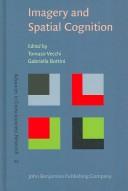
ISBN: 1282155555 9786612155550 9027293430 9789027293435 9789027252029 9027252025 9781282155558 6612155558 9027252025 Year: 2006 Publisher: Amsterdam ; Philadelphia, PA : John Benjamins Pub.,
Abstract | Keywords | Export | Availability | Bookmark
 Loading...
Loading...Choose an application
- Reference Manager
- EndNote
- RefWorks (Direct export to RefWorks)
Imagery (Psychology) --- Space perception. --- Visual perception. --- Mental representation. --- Representation, Mental --- Abstraction --- Perception --- Optics, Psychological --- Vision --- Visual discrimination --- Spatial perception --- Spatial behavior --- Figure-ground perception --- Geographical perception --- Imagery, Mental --- Images, Mental --- Mental imagery --- Mental images --- Imagination --- Visualization --- Psychological aspects --- Cognitive psychology
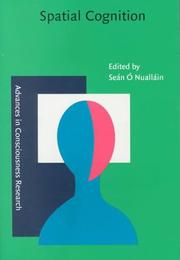
ISBN: 128225507X 9786612255076 0585461856 9027299889 9780585461854 1556198426 9781556198427 1556198426 9781282255074 6612255072 9789027299888 9027251460 9789027251466 Year: 2000 Volume: 26 Publisher: Amsterdam ; Philadelphia : John Benjamins Pub.,
Abstract | Keywords | Export | Availability | Bookmark
 Loading...
Loading...Choose an application
- Reference Manager
- EndNote
- RefWorks (Direct export to RefWorks)
Spatial behavior --- Space perception --- Personal space --- Human territoriality --- Interpersonal relations --- Space --- Behavior, Spatial --- Proxemic behavior --- Space behavior --- Spatially-oriented behavior --- Psychology --- Space and time --- Comportement spatial --- Perception spatiale --- Espace personnel --- Cognitive psychology --- Theory of knowledge --- Psycholinguistics
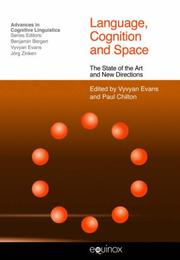
ISBN: 9781845532529 9781845535018 1845535014 9781845534417 1845534417 9781845534424 1845534425 1845535030 9781845535032 184553252X 1781790566 Year: 2011 Publisher: Sheffield ; Oakville : Equinox Pub.,
Abstract | Keywords | Export | Availability | Bookmark
 Loading...
Loading...Choose an application
- Reference Manager
- EndNote
- RefWorks (Direct export to RefWorks)
Developed with input from college student writers, The ""Backwards"" Research Guide for Writers is relevant as a text for undergraduate and postgraduate courses in composition, creative nonfiction, literary journalism, and feature writing as well as for working journalists and other writers seeking a new way of approaching a writing project.
Cognitive grammar. --- Space perception. --- --Perception --- --Espace --- --2291 --- 801.56 --- 801.56 Syntaxis. Semantiek --- Syntaxis. Semantiek --- Psycholinguistics --- Grammar --- Affective and dynamic functions --- Cognitive grammar --- Space perception --- Spatial perception --- Perception --- Spatial behavior --- Figure-ground perception --- Geographical perception --- Cognitive linguistics --- Grammar, Comparative and general --- Cognition --- Grammaire cognitive --- English language --- Research --- Academic writing --- Report writing --- College teaching --- Learned writing --- Scholarly writing --- Authorship --- Science --- Science research --- Scientific research --- Information services --- Learning and scholarship --- Methodology --- Research teams --- Rhetoric --- Study and teaching (Higher) --- --Cognitive grammar. --- --Cognitive grammar --- Germanic languages --- Espace
| Listing 1 - 10 of 21 | << page >> |
Sort by
|

 Search
Search Feedback
Feedback About
About Help
Help News
News